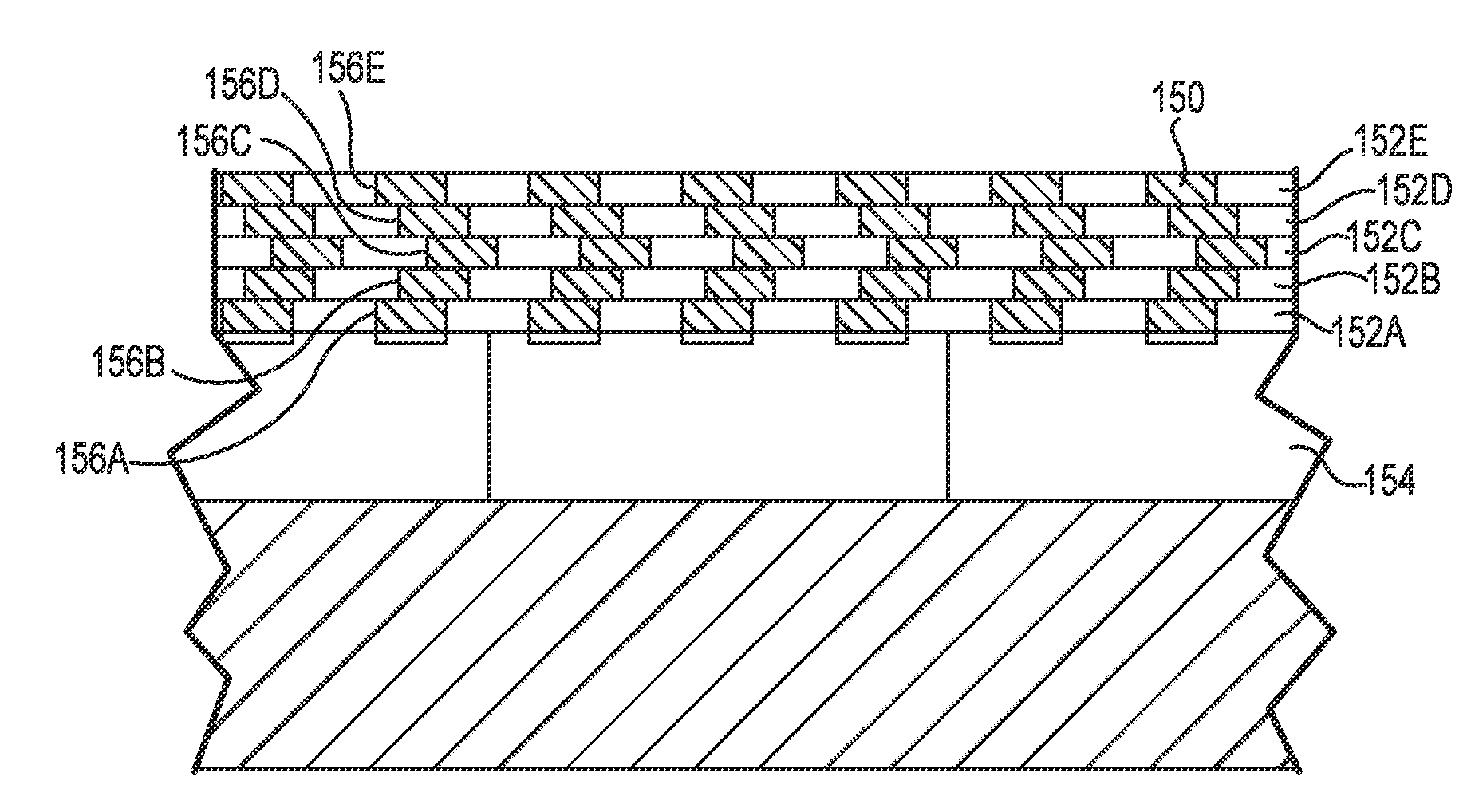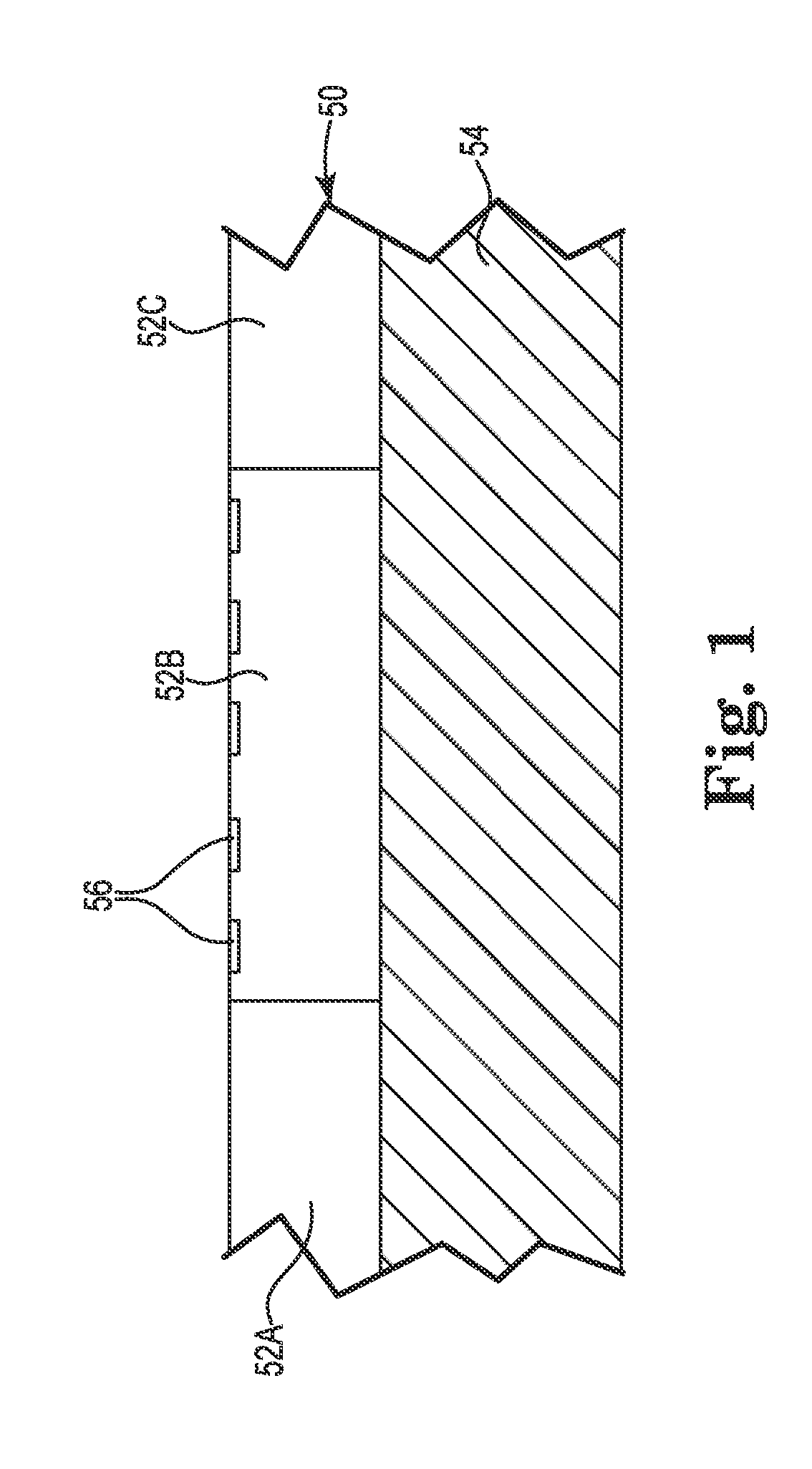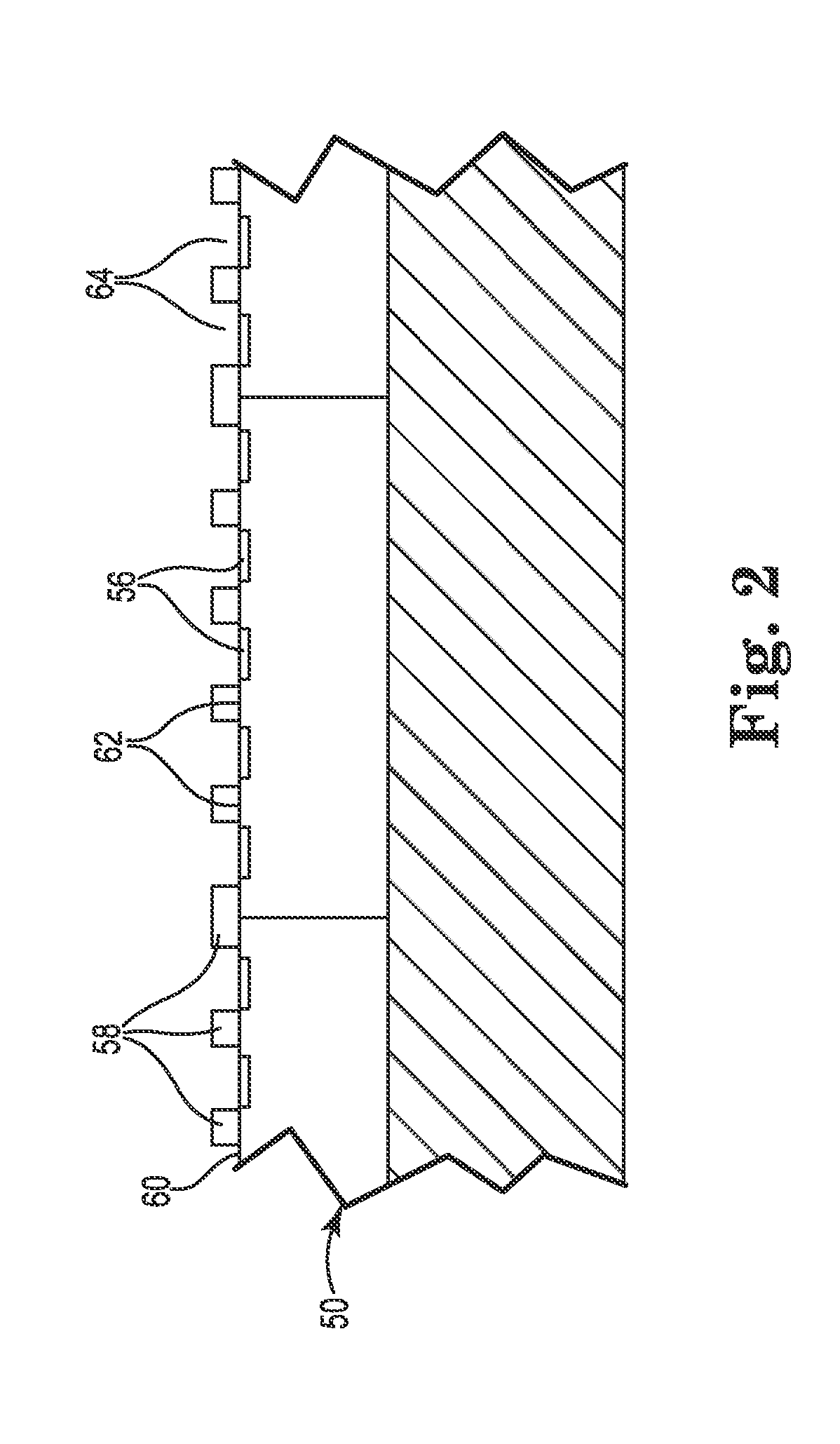Semiconductor die terminal
a technology of semiconductor devices and die terminals, which is applied in the direction of semiconductor devices, semiconductor/solid-state device details, electrical apparatus, etc., can solve the problems of device not being connected size and distance between die terminals being so small, and the device not being able to connect to the final pcb
- Summary
- Abstract
- Description
- Claims
- Application Information
AI Technical Summary
Benefits of technology
Problems solved by technology
Method used
Image
Examples
Embodiment Construction
[0033]FIG. 1 is a side sectional view of semiconductor wafer 50 containing a plurality of IC devices 52A, 52B, 52C (collectively “52”) located on substrate 54. The IC terminals 56 are facing up. The substrate 54 may be a temporary work surface or may be a portion of a semiconductor package.
[0034]The substrate 54 can be constructed from a variety of rigid or flexible polymeric materials, such as for example, UV stabilized tetrafunctional epoxy resin systems referred to as Flame Retardant 4 (FR-4); bismaleimide-triazine thermoset epoxy resins referred to as BT-Epoxy or BT Resin; and liquid crystal polymers (LCPs), which are polyester polymers that are extremely unreactive, inert and resistant to fire. Other suitable plastics include phenolics, polyester (PET), polyimide (PI), polyethylene napthalate (PEN), Polyetherimide (PEI), along with various fluoropolymers (FEP) and copolymers, and Ryton® available from Phillips Petroleum Company. For some applications, the substrate 54 can be a ...
PUM
 Login to View More
Login to View More Abstract
Description
Claims
Application Information
 Login to View More
Login to View More - R&D
- Intellectual Property
- Life Sciences
- Materials
- Tech Scout
- Unparalleled Data Quality
- Higher Quality Content
- 60% Fewer Hallucinations
Browse by: Latest US Patents, China's latest patents, Technical Efficacy Thesaurus, Application Domain, Technology Topic, Popular Technical Reports.
© 2025 PatSnap. All rights reserved.Legal|Privacy policy|Modern Slavery Act Transparency Statement|Sitemap|About US| Contact US: help@patsnap.com



